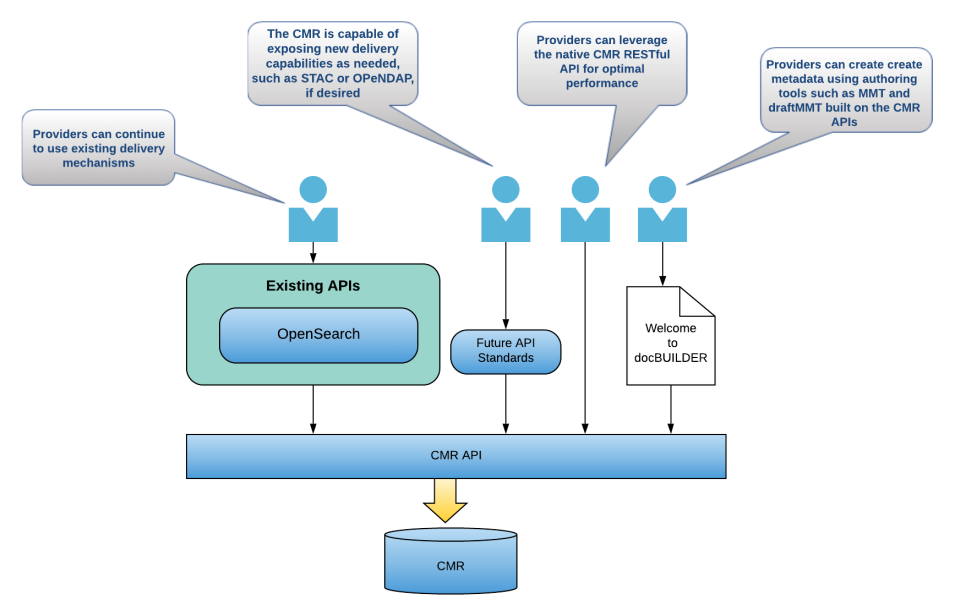NASA's Common Metadata Repository (CMR) is a high-performance, high-quality, continuously evolving metadata system that catalogs all data and service metadata records for NASA's Earth Observing System Data and Information System (EOSDIS) and will be the authoritative management system for all EOSDIS metadata. These metadata records are registered, modified, discovered, and accessed through programmatic interfaces leveraging standard protocols and APIs.
CMR is the keystone that makes NASA's Earth observation data discoverable. As a metadata repository, CMR contains Unified Metadata Model (UMM) schema records that describe individual Earth data files (UMM-Granules), collections of files (UMM-Collections), scientific details about the data files (UMM-Variables), related tools and services that act on the data files (UMM-Tools and -Services), and pertinent relationships between these concepts. Using the UMM allows CMR to host its metadata records in several supported native formats, with translation services available between formats.
As of 2024, CMR contains metadata describing over a billion Earth Observation data files stemming from approximately 10,000 data collections, but that just comprises NASA’s Earth Science Holdings. Because NASA is a member of the Committee on Earth Observation Satellites (CEOS), CMR also houses collection records for the dozens of other CEOS member agencies which contribute another 45,000 collection metadata records to CMR. Additionally, if our CEOS partners provide OpenSearch Description Documents (OSDDs) for their collection metadata records, the data files they house within those collections are also made discoverable through CMR, enabling interagency and international federated discovery. OpenSearch is an Open Geospatial Consortium (OGC) international standard for federated search and discovery.


